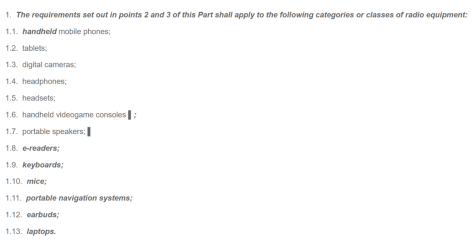USB-C iPhone?
Is it time for the end of Lightning?
https://www.apple.com/shop/product/MM0A3AM/A/usb-c-to-lightning-cable-1-m?fnode=3ccd613b62e36d0453c2be59e7945ed0c0d0fb56c08c234d78aa5ec960e95bf282f1db099de8a368e12171443dc429ee27594010747c9622cc808322e4a485a5a84c95599056020857633a90bfd51398ee06c3f695ee36ebaf347eca40d9fa424c6ebf560d07feb43ff9b86859a0d57a
November 21, 2022
The Lightning connector was introduced in 2012 with the iPhone 5, replacing the previous 30-pin connector. The advantages of Lightning were its smaller size and that it could be inserted into the receiving end of the connector either face up or face down. Even though this connector was advantageous from its predecessor, it still was proprietary to Apple devices so consumers continued to be further locked into Apple’s ecosystem.
However, over a decade later, this revolutionary connector may soon be forced out of Apple’s ecosystem. On Tuesday, October 4, 2022, the European Parliament passed a law “establishing a single charging solution for mobile phones, tablets and other portable electronics in the EU. “ The law states that anything in the categories listed below that is capable of being charged via wired charging must have a USB-C receptacle equipped.

In terms of Apple, quite a few of its products fall under the affected categories. It does not come into effect until 2024 but it is something that Apple needs to start thinking about, as they currently do not meet the new USB-C requirement in a lot of their products.
Apple has already stated that they believe the law isn’t fair, but they are not going to try and fight it. In an interview with the Wall Street Journal, Craig Federighi and Greg Joswaik spoke on the new law and gave a very vague look into the resolution Apple is going to go with.
“Governments, you don’t get to do what they’re going to do and obviously we’ll have to comply, but we think the approach would’ve been better environmentally and better for our customers to not have a government be that prescriptive.”
- Greg Joswiak
The terminology “obviously we’ll have to comply” is very vague and can mean quite a few different things. First, Apple could just switch the iPhone and their other array of Lightning products in the EU to USB-C, leaving the other regions still locked into Lightning. However, the manufacturing arrangement to make two different types of charging connectors for the same product can become very complicated and expensive, especially when you apply that to a majority of products in Apple’s lineup. It also won’t address the fact that there is an official USB-C iPhone in the EU that people around the world will want to get their hands on.
The second possible meaning of this is to switch all of their Lightning connectors to USB-C on a global scale. For some of their products, it seems they are already going with this. For example, the new Apple TV’s Siri Remote now ships with a USB-C connector for charging. This switching of the port is one of the simplest solutions but it does not seem very “Apple-like” for all of their Lightning products, especially for iPhone.

The third, and most likely solution that Apple is going to go with in my opinion, is to go portless and rely strictly on MagSafe for charging. MagSafe was first introduced in October 2020 alongside the iPhone 12 series. It features an array of magnets surrounding the wireless charging coil that is used to attach accessories on to the back of the iPhone. And in true Apple fashion, each official accessory has an animation that plays when attached.

Some of the original accessories that launched with the iPhone 12 and iPhone 12 Pro included a charging puck, wallet, and charging docks. Today, that lineup has spread to include car mounts, battery banks, and even laptop mounts for Continuity Camera. This magnet-based ecosystem hasn’t been limited to iPhones either. The 3rd generation AirPods and 2nd generation AirPods Pro can (in terms of the 3 generation AirPods) or do (in terms of the 2nd generation AirPods Pro) ship with a MagSafe compatible charging case, rendering the Lightning port on the bottom virtually useless. The same MagSafe ecosystem also extended to the Mac lineup in the new MacBook Air and 14” and 16” MacBook Pros.



